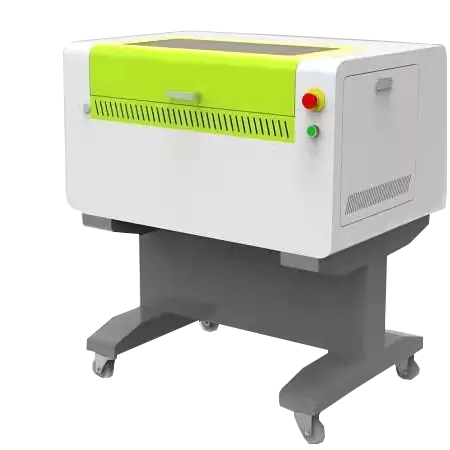How does the cooling system impact the performance and longevity of a 40W CO2 laser machine?
The cooling system of a 40W CO2 laser machine plays a crucial role in maintaining optimal operating conditions for the laser tube, which directly impacts performance and longevity. Here’s how the cooling system affects the machine:
- Temperature Control: The laser tube generates significant heat during operation. The cooling system, typically using water or air, helps dissipate this heat to maintain a stable operating temperature. Proper temperature control ensures the laser tube functions efficiently and prevents overheating, which can damage the tube or degrade its performance.
- Tube Longevity: A well-maintained and properly cooled laser tube tends to have a longer lifespan. Consistent and adequate cooling helps prevent thermal stress and extends the operational life of the tube. Overheating can cause premature tube failure, reducing its lifespan and requiring more frequent replacements.
- Consistent Performance: Stable temperatures maintained by the cooling system contribute to consistent laser performance. Fluctuations in temperature can affect the laser’s power output and stability, leading to variations in engraving or cutting quality.
- Efficiency: An efficient cooling system ensures the laser tube operates at its optimal temperature, improving the overall efficiency of the machine. This efficiency translates to better engraving and cutting results while reducing the likelihood of downtime due to tube overheating or failures.
- Maintenance Requirements: Regular maintenance of the cooling system is essential to ensure its proper functioning. Cleaning filters, checking water levels, and monitoring for leaks or air bubbles in water-cooled systems are critical to avoid issues that could impact machine performance.
- Heat Dissipation: Efficient cooling systems prevent heat build-up not only in the laser tube but also in other critical components of the machine. This helps maintain the overall performance and longevity of various parts, including mirrors, lenses, and electronic components.
- Protective Measures: A well-designed cooling system with adequate safeguards protects the machine from damage caused by overheating. Automatic shut-off mechanisms or temperature sensors can prevent operation when the cooling system malfunctions, safeguarding the equipment.
In summary, the cooling system of a 40W CO2 laser machine directly influences the stability, efficiency, and lifespan of the laser tube and other critical components. Proper maintenance and attention to the cooling system contribute significantly to consistent performance and prolonged machine longevity.
What are the energy consumption and operating costs associated with using a 40W CO2 laser engraving machine?
The energy consumption and operating costs of a 40W CO2 laser engraving machine can vary based on several factors:
- Power Consumption: A 40W CO2 laser machine’s power rating indicates the maximum power it consumes during operation. However, the actual power consumption can fluctuate based on usage patterns, co2 laser engraving machine 40w settings, and the materials being processed. It’s generally more energy-efficient compared to higher-powered models, but the actual energy usage varies.
- Usage Time: The more frequently the machine is used and the longer the operational hours, the higher the energy consumption. Idle times between jobs also contribute to overall energy usage, so optimizing workflow and scheduling can impact operating costs.
- Material Efficiency: Different materials require varying amounts of laser power and time for engraving or cutting. Materials that require longer processing times or higher power settings will contribute more to energy costs.
- Cooling Systems: Some CO2 laser machines employ water-cooling systems, which add to overall energy consumption. Monitoring and maintaining these systems affect energy usage as well.
- Energy Efficiency Features: Some modern CO2 laser machines incorporate energy-saving features such as standby modes or automatic shut-off after periods of inactivity. These features can help reduce energy consumption during idle times.
- Location and Energy Rates: Energy costs can vary widely depending on geographic location and local energy rates. Higher energy rates will naturally result in higher operating costs for the machine.
Calculating the exact operating costs involves considering the machine’s power rating, the duration of operation, the specific settings used, and the energy rates in the locality.
As a general estimate, a 40W CO2 laser machine, being relatively lower in power, tends to have lower operating costs compared to higher-powered models. However, for accurate cost calculations, it’s essential to monitor the machine’s actual energy consumption over a period and factor in the local energy rates to determine the specific operating costs.
